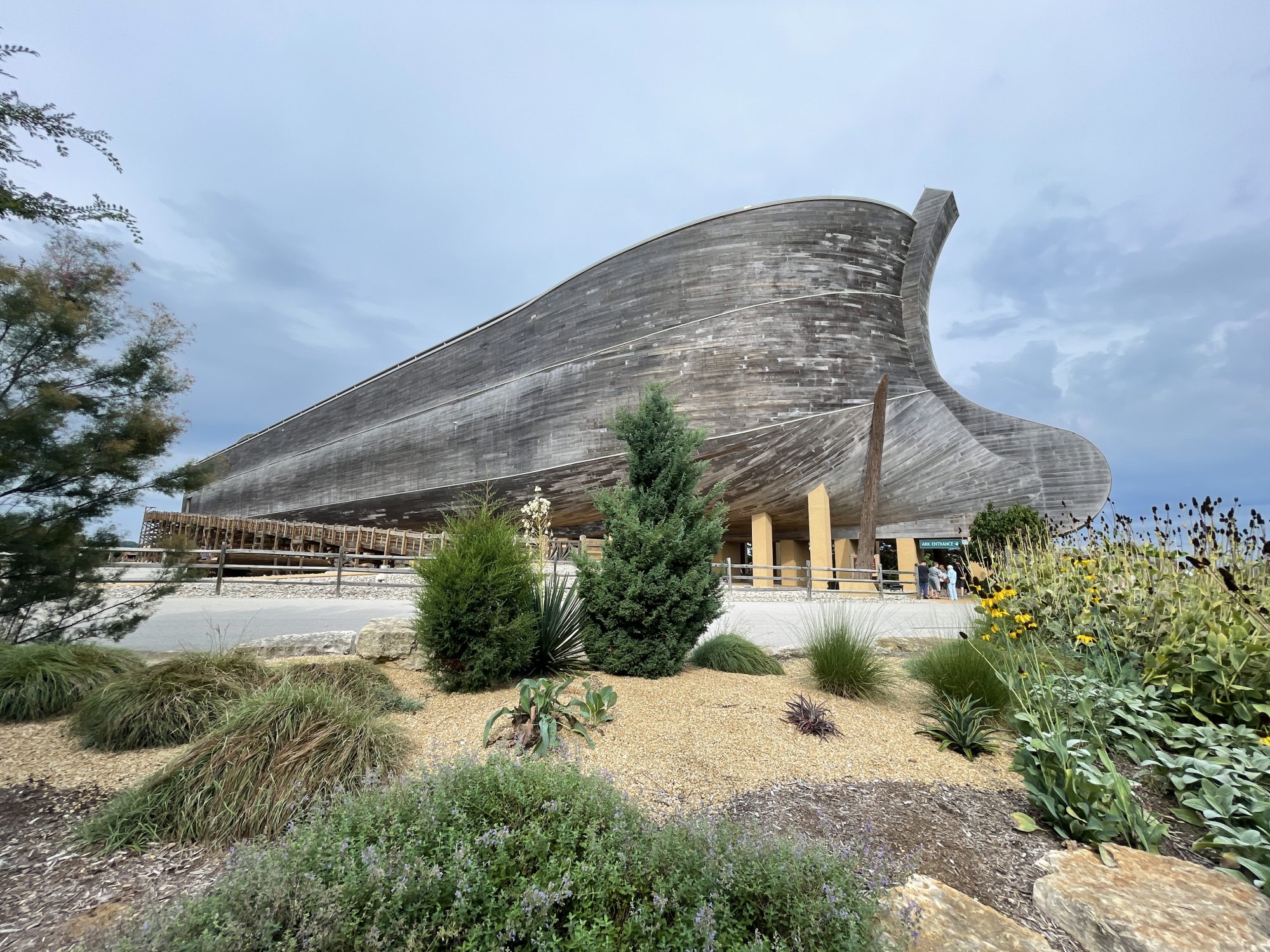Let me go into a little more detail about the timing of events.
There are 4 major phases of the flood: the rupture phase, the flood phase, the continental drift phase, and the recovery phase.
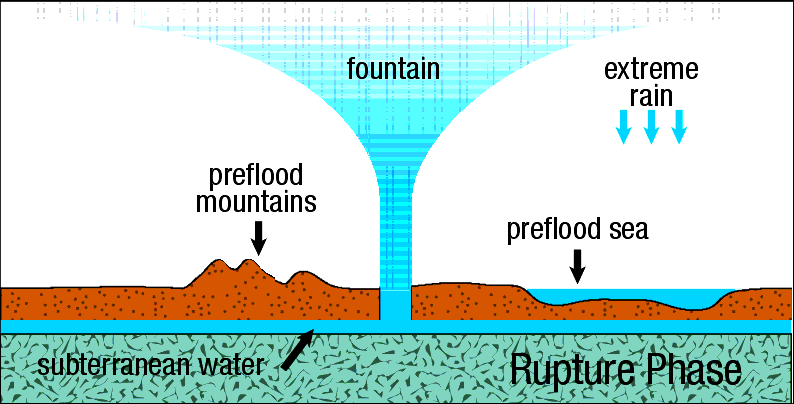
During the rupture phase, the crack on the crust formed that started at the mid-Oceanic ridge and traveled around the world. Water jettisoned from the underground chamber at the fissures into the atmosphere and eroded the sides of the cracks. I believe this phase occurred over days, perhaps weeks. Brown says this occurred in hours. I however think it must’ve been longer. I think the layers got deposited in stages to account for footprints in layers and also sequences of layers that could not be explained with a single deposit of sediments. Sorting of layers would take place between the stages where deposits were laid down. This entire process could not have happened in hours, but rather over many days.
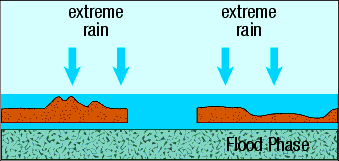
During the flood phase, sediments and water covered the entire earth. The surface topography was still relatively flat at this point. Brown says this phase lasted months long. I would say this probably last much shorter, in the range of days/weeks. My basis for this is that I don’t agree with Brown on how the mid-Oceanic ridge got formed. Brown believes it was formed by the weight of the continents pressing down on the basalt and it eventually caused the mid-Oceanic ridge to form. I have a different hypothesis. I believe the oceanic ridges were caused by hydrodynamic forces as the water was ejected out of the earth. The pressure of the escaping water would cause the basalt to be forced upward by the water pressure forces and form the ridges. The formation of the ridges caused the flood to go into the next stage, the drift phase. Since hydrodynamic forces would have immediately formed the ridges, the flood phase could not last too long.
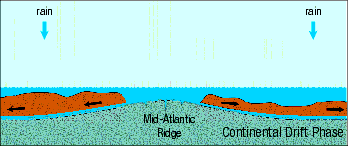
During the drift phase, as the mid-Oceanic ridge formed, the hydoplates slid down the ridge and the Americas and Eurasia/Africa moved away from each other. As the hydoplates moved, there was still some underground water under the hydroplates to allow for movement. But, when the water was gone, the hydroplates would stop moving when it hit the basalt underneath. The momentum of the moving hydoplates would cause the formation of the mountains. Brown believes this phase to have lasted 1 day, though I believed it lasted much longer, days/weeks.
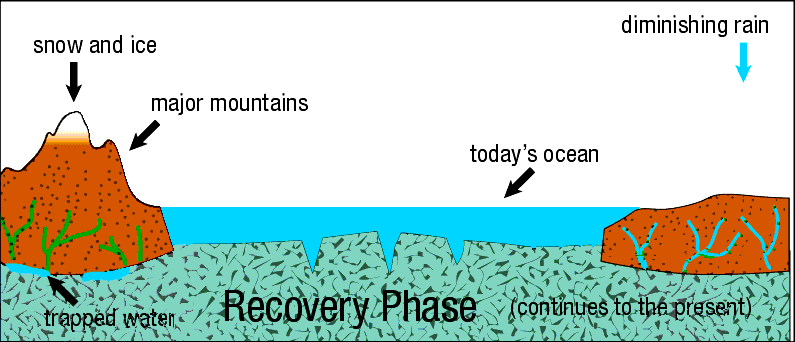
During the recovery phase, the water receded into the lower parts of the surface creating the oceans we have now. Canyons were created by water rapidly receding from the areas near mountains. The sea level was lower after all the water receded than compared to now. Over time, all the weight of the continents would cause the continents to gradually sink into the basalt underneath. This would cause the continents to be lowered, as well as push the sea floor up. This would explain land bridges in the past that are now covered by water today.
Still, the ocean ridges may be special. We might need to think about the Pacific ocean, where there isn’t a ridge, rather than the Atlantic, where there is. The Pacific ought to be pretty deep with sediment, since it’s had the flood and some 6000 years of current-rate sedimentation to add to it.
I have simplified the explanation of the cracks on the crust by only mentioning the mid-Atlantic ridge. The mid-Atlantic crack was where the fissure originally started. But, it did not stop there. Anywhere where there is a ridge in the oceans was where there was a fissure in the crust.
There are actually many ridges in the Pacific Ocean. As evidenced below, ridges are found in almost all the oceans.
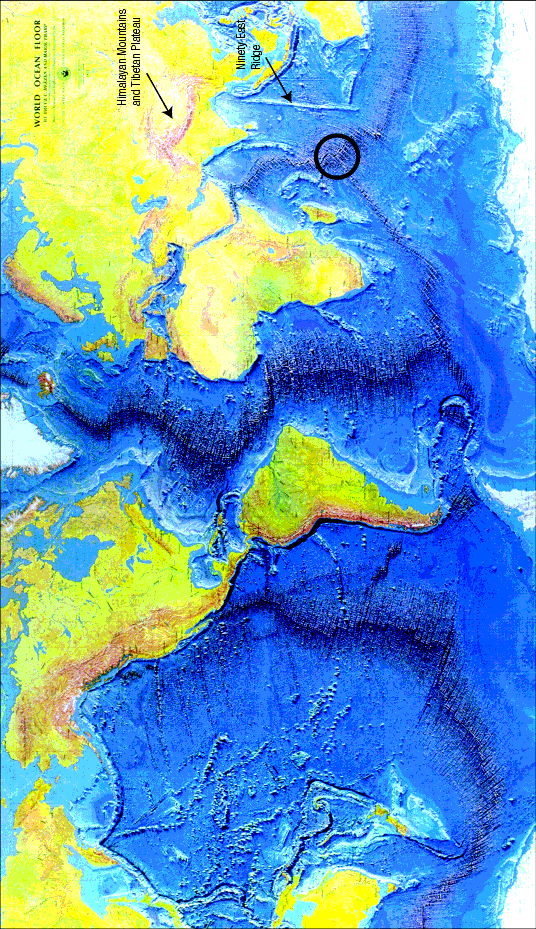
It is also interesting to note that almost all the ocean floors are basalt. To my knowledge, there are not layers of sediments covering the sea floors.
https://debatingchristianity.com/forum/viewtopic.php?p=5529#p5529
